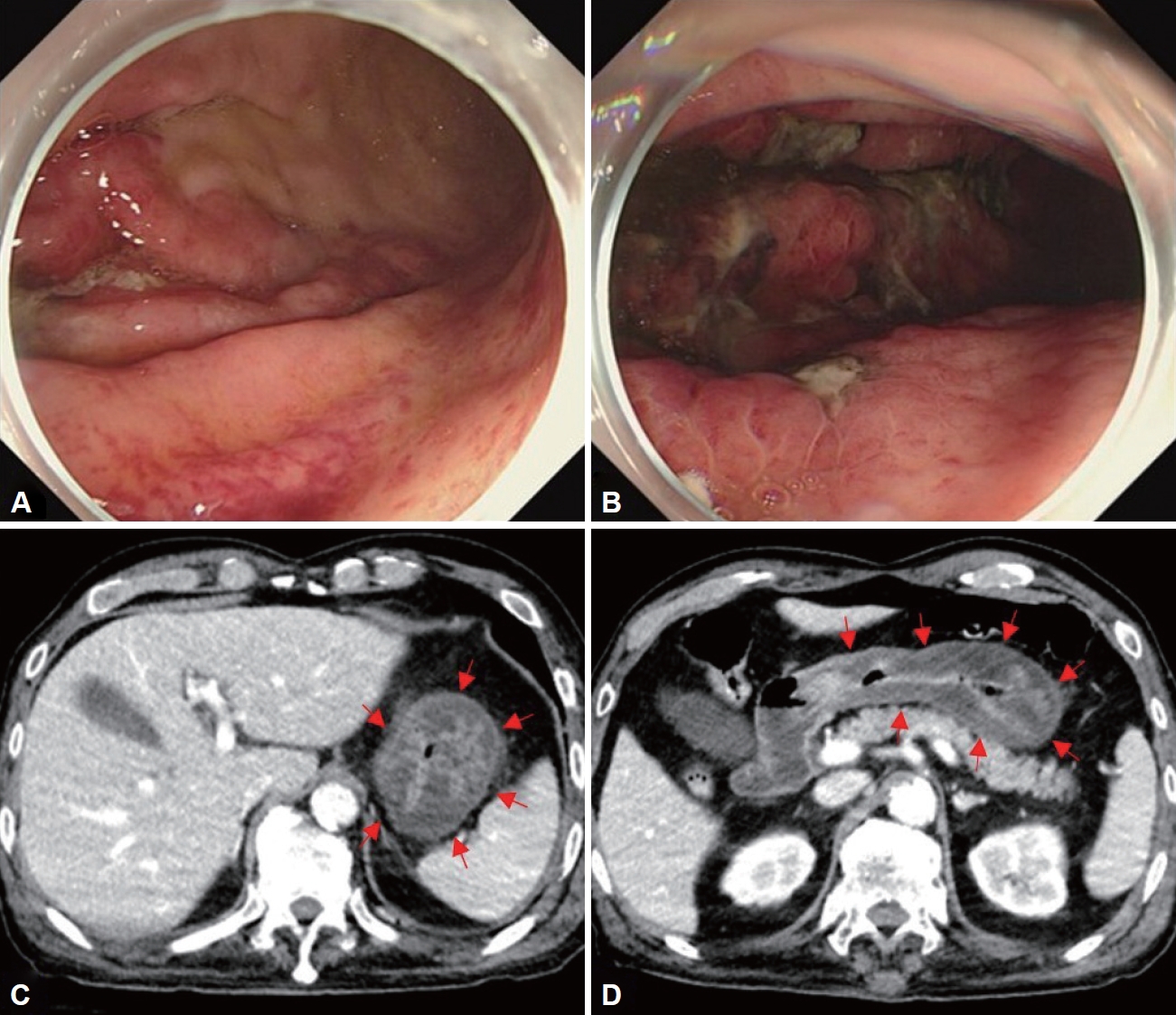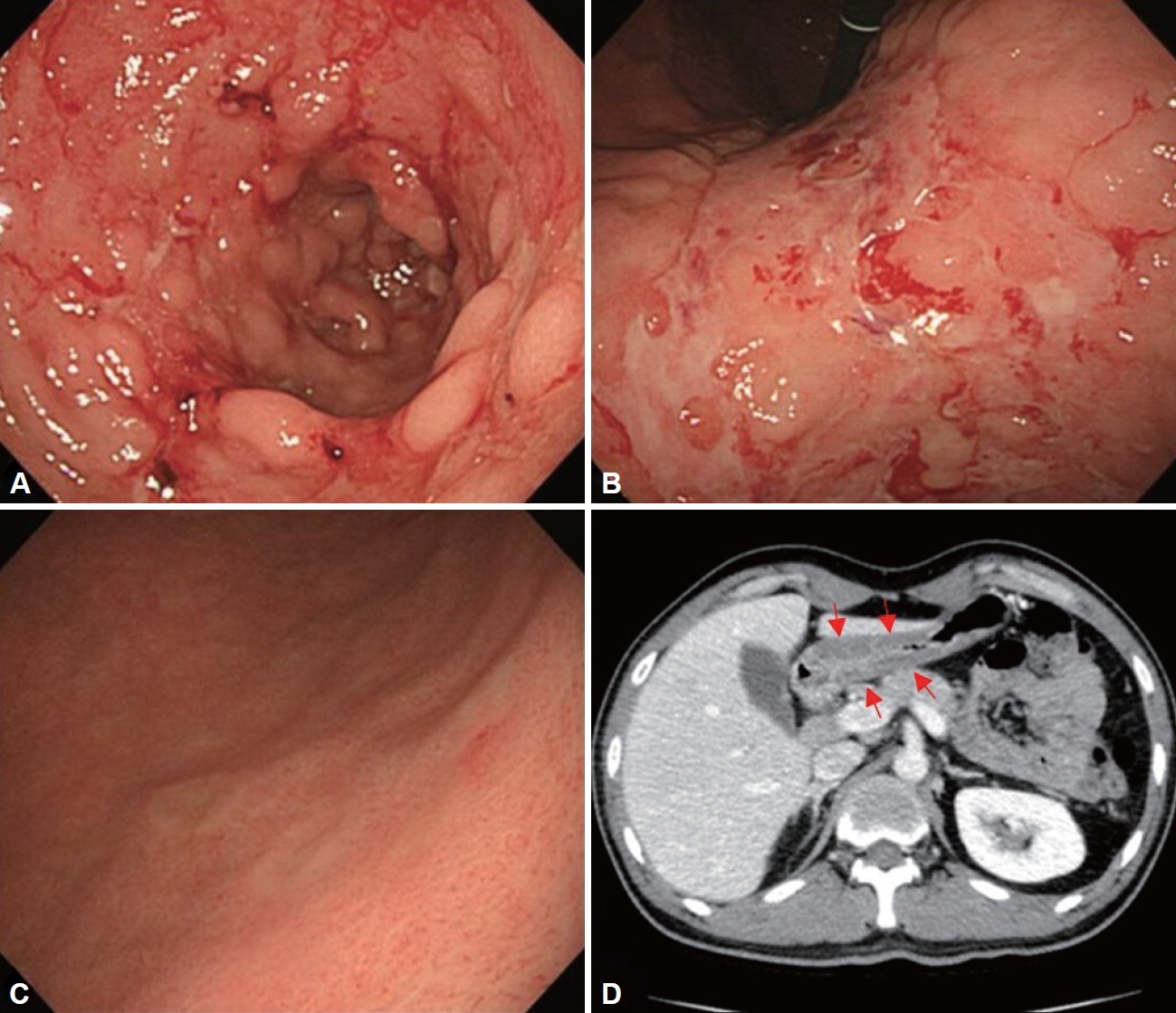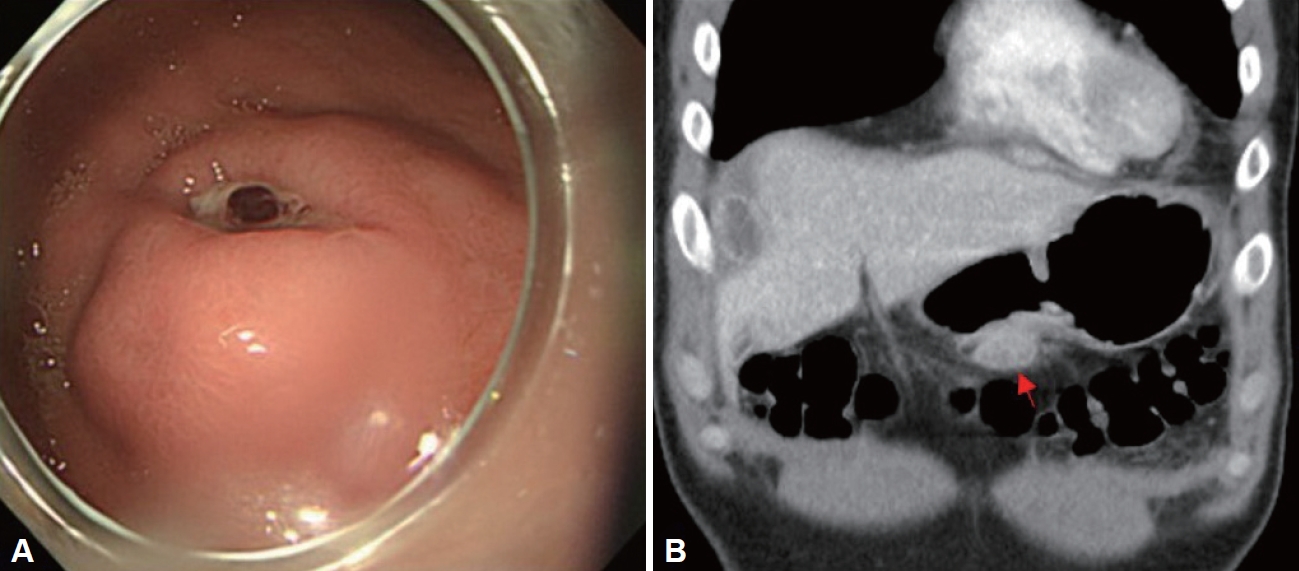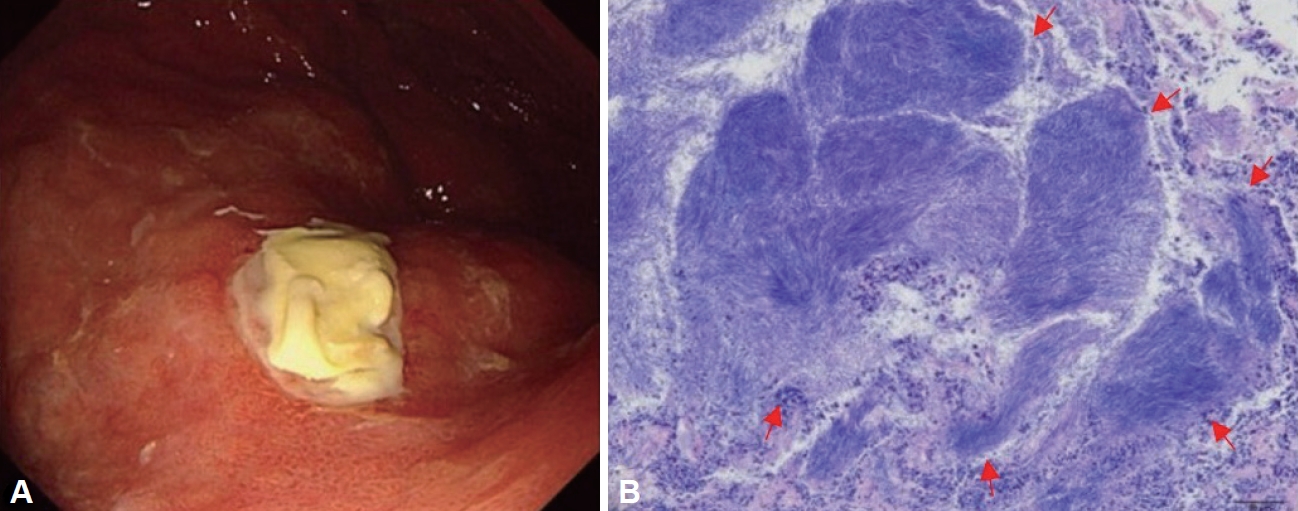1. Nakamura K, Sakuragi N, Takakuwa A, Ayabe T. Paneth cell α-defensins and enteric microbiota in health and disease. Biosci Microbiota Food Health 2016;35:57–67.


2. Lee SM, Cheung DY. Infectious diseases of the stomach in immunecompromised patients. Korean J Helicobacter Up Gastrointest Res 2019;19:38–41.


3. Jo H, Shin CM. Infectious gastric diseases other than Helicobacter. Korean J Gastroenterol 2023;82:269–281.


4. Roh M, Min YW. Infectious diseases of the upper gastrointestinal tract. Korean J Helicobacter Up Gastrointest Res 2019;19:16–22.


5. Sinagra E, Macaione I, Stella M, et al. Gastric syphilis presenting as a nodal inflammatory pseudotumor mimicking a neoplasm: don’t forget the treponema! Case report and scoping review of the literature of the last 65 years. Gastroenterol Insights 2023;14:178–190.

6. Kim NY, Park JS, Lee KJ, Yun HK, Kim JS. A case of acute phlegmonous gastritis causing gastroparesis and cured with medical treatment alone. Korean J Gastroenterol 2011;57:309–314.


7. Miller AI, Smith B, Rogers AI. Phlegmonous gastritis. Gastroenterology 1975;68:231–238.


8. Kim GY, Ward J, Henessey B, et al. Phlegmonous gastritis: case report and review. Gastrointest Endosc 2005;61:168–174.


9. Wakayama T, Watanabe H, Ishizaki Y, et al. A case of phlegmonous esophagitis associated with diffuse phlegmonous gastritis. Am J Gastroenterol 1994;89:804–806.

10. Joko T, Tanaka H, Hirakata H, et al. Phlegmonous gastritis in a haemodialysis patient with secondary amyloidosis. Nephrol Dial Transplant 1999;14:196–198.


11. Lee BS, Kim SM, Seong JK, et al. Phlegmonous gastritis after endoscopic mucosal resection. Endoscopy 2005;37:490–493.


13. Itonaga M, Ueda K, Ichinose M. Phlegmonous gastritis caused by endoscopic ultrasound-guided fine-needle aspiration (EUS-FNA). Dig Endosc 2012;24:488.

14. Kim TU, Kim SJ, Ryu H, et al. Emphysematous gastritis worsened after upper endoscopy. Korean J Helicobacter Up Gastrointest Res 2020;20:73–76.


17. Lee TH, Lee GS, Im EH, et al. A case of acute phlegmonous gastritis treated with antibiotics alone. Clin Endosc 2005;31:44–48.
19. Lee GW, Lee OJ, Jung KW, et al. Acute phlegmonous gastritis diagnosed early endoscopically and treated successfully with antibiotics. Clin Endosc 2001;23:225–229.
20. Iwakiri Y, Kabemura T, Yasuda D, et al. A case of acute phlegmonous gastritis successfully treated with antibiotics. J Clin Gastroenterol 1999;28:175–177.


21. Kim HS, Jang WI, Lee SS, et al. Two cases of phlegmonous gastritis secondary to corrosive gastitis caused by formalin. Korean J Med 1991;40:268–273.
22. Kan-no Y, Irisawa A, Takagi T, et al. Endosonographic diagnosis and follow-up of phlegmonous gastritis. J Clin Ultrasound 2007;35:524–526.


23. Greenstein DB, Wilcox CM, Schwartz DA. Gastric syphilis. Report of seven cases and review of the literature. J Clin Gastroenterol 1994;18:4–9.

24. Kim T, Cho SS, Kim HS, Choi H. National notification trend of sexually transmitted infections (STIs) in 2019-2020. Public Health Wkly Rep 2021;14:2496–2504.
25. Cooley RN, Childers JH. Acquired syphilis of the stomach. Report of two cases. Gastroenterology 1960;39:201–207.


26. Mylona EE, Baraboutis IG, Papastamopoulos V, et al. Gastric syphilis: a systematic review of published cases of the last 50 years. Sex Transm Dis 2010;37:177–183.


27. Abdu RA, Carter K, Pomidor WJ. Gastric syphilis mimicking linitis plastica. Arch Surg 1993;128:103–104.


28. Long BW, Johnston JH, Wetzel W, Flowers RH 3rd, Haick A. Gastric syphilis: endoscopic and histological features mimicking lymphoma. Am J Gastroenterol 1995;90:1504–1507.

29. Yu HJ, Kim SJ, Oh HH, et al. Case report of gastric syphilis in Korea: clinical features, pathology, management, and prognosis. Medicine (Baltimore) 2021;100:e28212.


30. Workowski KA, Bachmann LH, Chan PA, et al. Sexually transmitted infections treatment guidelines, 2021. MMWR Recomm Rep 2021;70:1–187.

31. Jones BV, Lichtenstein JE. Gastric syphilis: radiologic findings. AJR Am J Roentgenol 1993;160:59–61.


32. Shen Y, Nie L, Zhang M, et al. Gastric syphilis mimicking lymphoma. Endoscopy 2015;47(Suppl 1): E170–E171.


33. Massironi S, Carmagnola S, Penagini R, Conte D. Gastric involvement in a patient with secondary syphilis. Dig Liver Dis 2005;37:368–371.


35. Misra RC, Agarwal SK, Prakash P, Saha MM, Gupta PS. Gastric tuberculosis. Endoscopy 1982;14:235–237.


36. Perez-Piqueras J, Coca S, Silva C, Martinez D, Peralba J, Moreno M. Isolated gastric tuberculosis: a case report. Endoscopy 1993;25:376.


42. Gilinsky NH, Marks IN, Kottler RE, Price SK. Abdominal tuberculosis. A 10-year review. S Afr Med J 1983;64:849–857.

43. Rao YG, Pande GK, Sahni P, Chattopadhyay TK. Gastroduodenal tuberculosis management guidelines, based on a large experience and a review of the literature. Can J Surg 2004;47:364–368.


45. World Health Organization. Comprehensive TB guidelines for national tuberculosis program. 5th ed. Geneva: World Health Organization, 2020.
47. Scheckler WE. Observations on Wisconsin’s public health agenda. Wis Med J 1991;90:27, 29, 30–31.

48. Wong VK, Turmezei TD, Weston VC. Actinomycosis. BMJ 2011;343:d6099.


49. Zumu M, Lakshmanan I, Arun RS, Damle A. Primary gastric actinomycosis: case reports and literature review. Gastroenterol Hepatol Endosc Pract 2024;4:34–39.

53. Lee DS, Kang JY, Kim H, et al. A case of primary gastric actinomycosis. Korean J Med 2009;77:27–30.
54. Skoutelis A, Panagopoulos C, Kalfarentzos F, Bassaris H. Intramural gastric actinomycosis. South Med J 1995;88:647–650.


56. Lee SH, Kim HJ, Kim HJ, et al. Primary gastric actinomycosis diagnosed by endoscopic biopsy: case report. Gastrointest Endosc 2004;59:586–589.


57. Euanorasetr C, Sornmayura P. Gastric outlet obstruction secondary to gastric actinomycosis: a case report and literature review. Thai J Surg 2010;31:63–68.
58. Valour F, Sénéchal A, Dupieux C, et al. Actinomycosis: etiology, clinical features, diagnosis, treatment, and management. Infect Drug Resist 2014;7:183–197.















